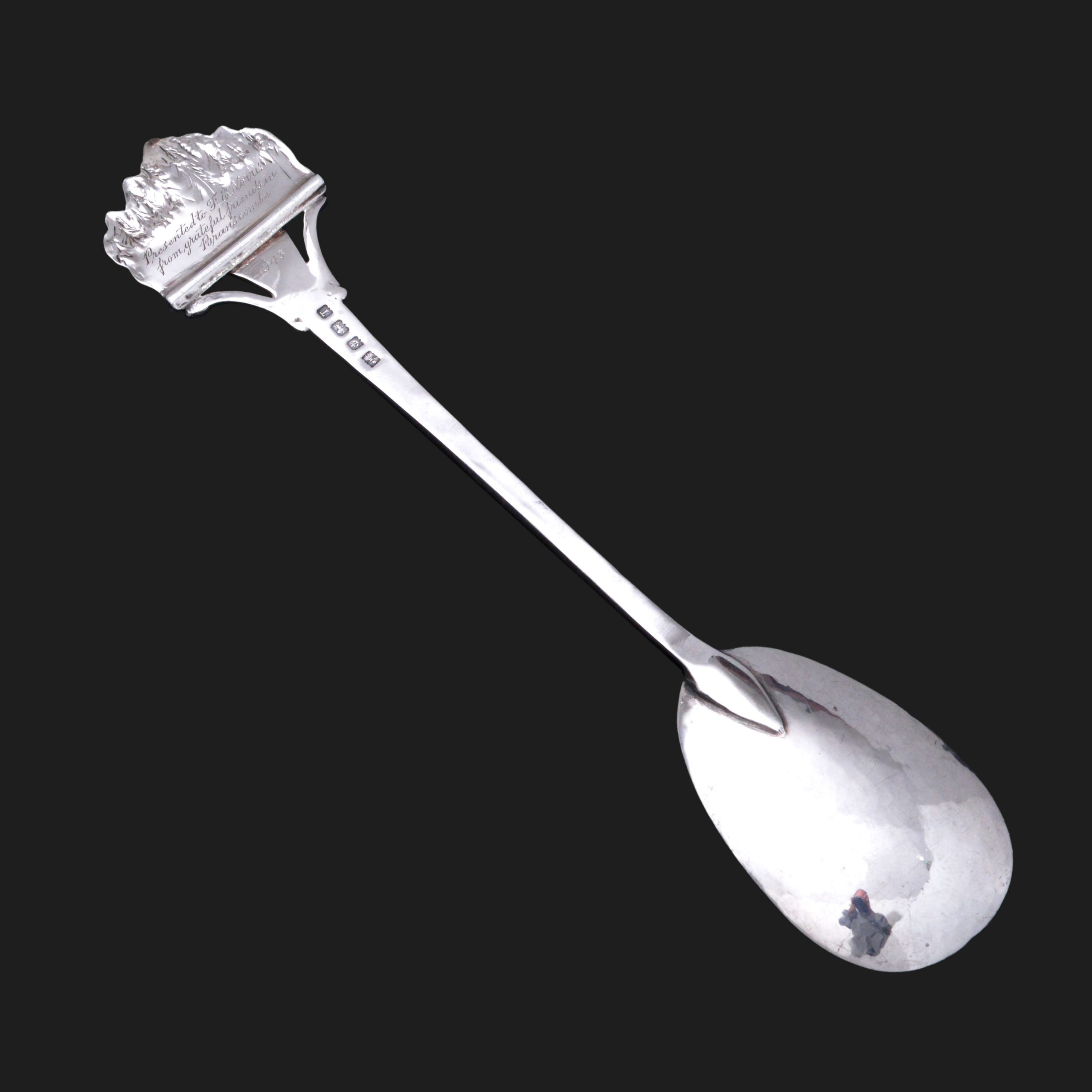A William Henry Creswick large “Branscombe” spoon
Price: SOLD
For sale is this remarkable, large and heavy, silver spoon by William Henry Creswick. The finial design is in three dimensions and an accurate depiction of Saint Winifred’s Church, Branscombe, Devon. See this link for image of church and this link for Wikipedia page details.
The back of the finial is inscribed “Presented to F.E Norris, from grateful friends in Branscombe”. The spoon is fully hallmarked for Birmingham 1943. Based on a local history pamphlet by F.C Butters (see images), F E Norris photographed the church and its interiors, taking over 700 photos, in case of destruction during the war. The church is one of the oldest in Devon.
William Henry Creswick (1874-1965) was son of the renowned British sculptor Benjamin Creswick. In the 1891 census at 17 William is described as an “Art Student” (almost certainly at the Birmingham School of Arts or Vittoria Street) and by the 1901 census, when he is 27, he describes himself as an “Art metal craftsman”. There is no record of his work at this time and he only enters his own assay mark on 10th January 1913, where he gives his occupation as ‘Craftsman’ of 79 Jockey Road Sutton Coldfield.
In a 1916 directory he describes himself as a “wholesale jeweller” which probably explains why his identifiable output at this time seems to have been tiny, based on the paucity of items found in auction records. His profile perhaps is in part also hidden due to his mark’s regular confusion with WH Collins (Dryad) mark.
In 1921 Creswick moved to ‘Northleigh’ Colyton, Devon and from 1942 his address is given as ‘Studio Deems’, Branscombe, Beer, Devon. No doubt his locality made him a natural choice for this spoon’s commission. From 1920’s until he retired in the 1950’s Creswick was a teacher of metalwork at Colyton Grammar School. A copper advertising sign he made, probably dating to around this time, is shown in the images, as is “Studio Deems”.
Creswick registered marks from Studio Deems at the Chester assay office in 1945, describing himself as a an “Artist in gold and silver”. His later work, which seems more prevalent, is a mix of modernist and arts and crafts, typically plainer and cleaner lined but still with visible hand hammering. He died in Honiton, Devon in 1965 in a nursing home.
William came from a family of sculptors and metalworkers and his sister in law was Nora Creswick, the Edinburgh silversmith who married his younger brother Charles, also a silversmith .
Maker: William Henry Creswick
Designer: William Henry Creswick
Date: 1943
Marks: WHC, Birmingham, “T”
Material: Sterling silver
Condition: Excellent
Size: Length 23.5 cm
Weight: 90 grams, 3.2 oz
Additional Information
| Period | Arts and crafts |
|---|









